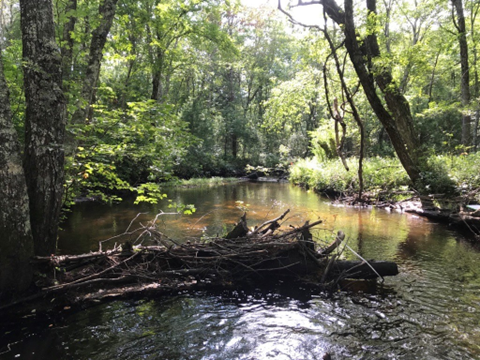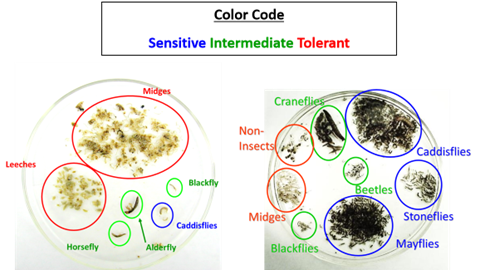Resource managers in Southern New England have a new tool to assess biological conditions and water quality in slow-moving streams. The index of biotic integrity (IBI) uses biomonitoring – the use of organisms such as fish, benthic macroinvertebrates, or algae to measure environmental impacts. The index was developed by NEIWPCC and the Southeastern New England Program (SNEP) with Tetra Tech, the Massachusetts Department of Environmental Protection (MassDEP), and the Rhode Island Department of Environmental Management (RI DEM).
“Developing an IBI allows us to gather a comprehensive assessment of overall ecosystem health from the perspective of the organisms who live there,” said Maryann Dugan, environmental analyst at NEIWPCC. “Looking at macroinvertebrate communities is a neat way to gain insight about ecosystem stressors and overall water quality over time.”

The tool specifically applies to low-gradient freshwater streams – those with low slopes, slow water movement, and few or no riffle habitats – in the coastal areas of Massachusetts and Rhode Island, which include the watersheds of southern Cape Cod, Narragansett Bay, Buzzards Bay, Martha’s Vineyard, and Nantucket. These streams provide essential aquatic habitat, support wildlife and human recreational activities – yet are impacted by development, pollutants such as pesticides and road salt, and harmful algal blooms. An increased understanding of the biological integrity of these streams will inform decisions regarding their management, planning, and local and regional regulation.
“A low-gradient stream differs significantly – even visually – from a steep, fast moving high-gradient stream,” said Dugan. “You can imagine the habitat type and availability within the stream, the resulting macroinvertebrate communities, and macroinvertebrate responses to stressors all vary quite a bit as well. With the addition of an IBI specifically created for low-gradient streams in this region, MassDEP and RI DEM can better assess these unique waterways.”

To develop the IBI, samples were collected at 50 sites from July 1 to September 30 in 2019. At each stream location, field staff collected macroinvertebrate and water quality samples, recording data for water temperature, pH, conductivity, dissolved oxygen, and transparency. Additionally, staff assessed the surrounding habitat and land use. The samples were brought back to a lab to identify and count the macroinvertebrates. By comparing the presence or absence of certain macroinvertebrates and overall stream conditions, researchers can evaluate biological integrity along a gradient from “natural” to “severely degraded” for each site. The resulting low-gradient IBI can be applied throughout Massachusetts and Rhode Island at applicable streams to identify and protect waterbodies, prioritize restoration efforts, and inform permitting and licensing decisions.
Learn more about this collaborative, interstate project through the interactive StoryMap, “Biomonitoring in Southeastern New England.” For a more technical StoryMap detailing the IBI development, click here.
Read the final report for the “Development of an Index of Biotic Integrity for Macroinvertebrates in Freshwater Low Gradient Wadeable Streams in Southeast New England” project.